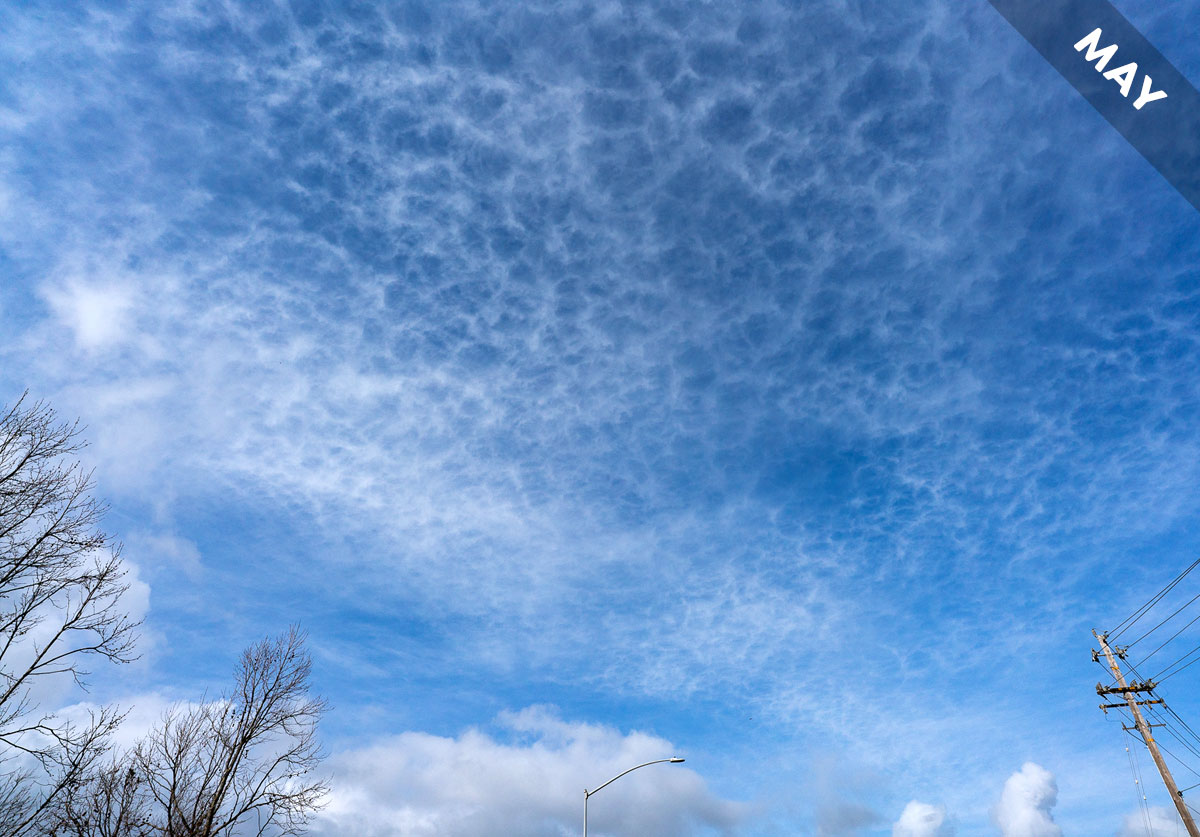Lacunosus – The Most Holey of All Clouds
Cloud classifications are mostly based on their appearance. The names typically refer to what the clouds look like. We just say them in Latin to make it feel more official. The lacunosus variety of cloud is a case in point. Its name is the Latin for ‘full of holes’, and you can easily see why.
This lacunosus pattern is found in three of the ten main cloud types: the low cloud Stratocumulus, the mid-level cloud Altocumulus, and the high cloud Cirrocumulus. The size of the holes at each of the altitudes of cloud is likely the same – somewhere around 0.5-3 miles (1-5 km) across – but they look different sizes when viewed from the ground. The low-level Stratocumulus lacunosus appears to have large holes. The high Cirrocumulus lacunosus has tiny ones. This difference is just to do with how far away they are. The formation featured here, spotted by Anthony Fisher over Oakland, California, US, is somewhere in between, for it is the mid-level version: Altocumulus lacunosus.
The holes form due to the way colder and warmer levels of air up around the cloud rise and sink through each other due to their differing densities. Cold air is denser than warm air, and so when a layer of cooler air finds itself above one of warmer air, the two try to swap places, the colder sinking down as the warmer floats up. In certain conditions, this trading of places happens in a rather orderly pattern. The cooler air above descends through the warmer air below in a pattern of sinking pockets. These carve out holes in any cloud layer they encounter below. In between them, cloud develops where the warmer air rises up to replace the cooler, to create a lattice of cloud fringes.
You can think of lacunosus clouds as the honeycombs of the sky.
Altocumulus lacunosus spotted over Oakland, California, US by Anthony Fisher through our CloudSpotter app. View this in the photo gallery.



